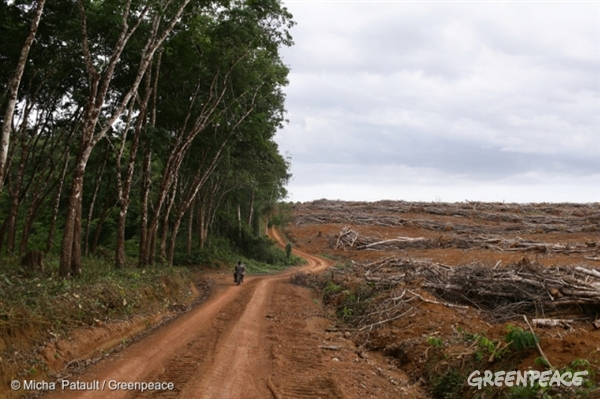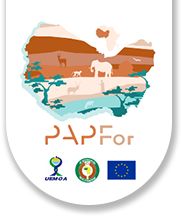Home / Guinean forests / Threats / Deforestation for agriculture / Agriculture for agro-industry / Rubber
Rubber
The term ‘rubber’ refers to an elastic, waterproof substance derived from the latex of certain plants or manufactured artificially.
Although natural rubber competes with synthetic rubber produced chemically from petroleum by-products, it remains irreplaceable for some of its physical properties.
Natural rubber comes mainly from latex, which is harvested by cutting the trunk of the rubber tree (Hevea brasiliensis).
Rubber is used in a wide range of applications: in industry (belts, hoses, tyres, computer cable sheaths, etc.), medicine (e.g. surgical gloves), sport and children’s games (playgrounds, synthetic turf materials, table tennis racket covers, etc.), shoe soles, baby bottle teats, wastewater treatment, food preservation, etc.
It provides a living for tens of millions of people around the world, the majority of whom are small-scale producers. However, the cultivation of rubber trees to produce natural rubber, through vast monoculture plantations, is also a major factor in deforestation and directly threatens the Guinean forests of West Africa. The rubber plantations are effectively biological deserts.

The table below shows the growth in rubber production in the Guinean forest countries, particularly in Côte d’Ivoire (Africa’s largest producer) and Nigeria. Global demand is growing strongly and is expected to exceed 19 million tonnes annually by 2025, with the risk that new rubber plantations will expand at the expense of natural forests.
| World Rank | State | 1961 | 1980 | 2000 | 2018 |
| 7 | Côte d’Ivoire | 82 | 21 626 | 123 398 | 461 000 |
| 12 | Nigeria | 58 000 | 45 000 | 107 000 | 145 150 |
| 15 | Liberia | 41 205 | 81 400 | 105 000 | 70 548 |
| 16 | Cameroon | 8 900 | 17 365 | 58 027 | 55 425 |
| 18 | Ghana | 415 | 11 200 | 8 700 | 23 874 |
| 22 | Guinea | - | - | 7 000 | 17 165 |
| World demand | 2 120 000 | 3 860 000 | 7 580 000 | 15 160 000 | |
Ranking of states by natural rubber production (in tonnes); source: ‘Rubber (natural)’, FAOSTAT, FAO, UN – Adapted from https://atlasocio.com/classements/economie/agriculture/classement-etats-par-production-caoutchouc-naturel-monde.php
Following in the footsteps of the palm oil sector, the natural rubber sector is also beginning to move towards zero deforestation practices. The multi-stakeholder Global Platform on Sustainable Natural Rubber (GPSNR) was set up at the World Rubber Summit in Singapore: https://sustainablenaturalrubber.org/. Again, there are criticisms of the label for the same reasons as for palm oil, i.e. the barely independent label awarded by rubber producers.

